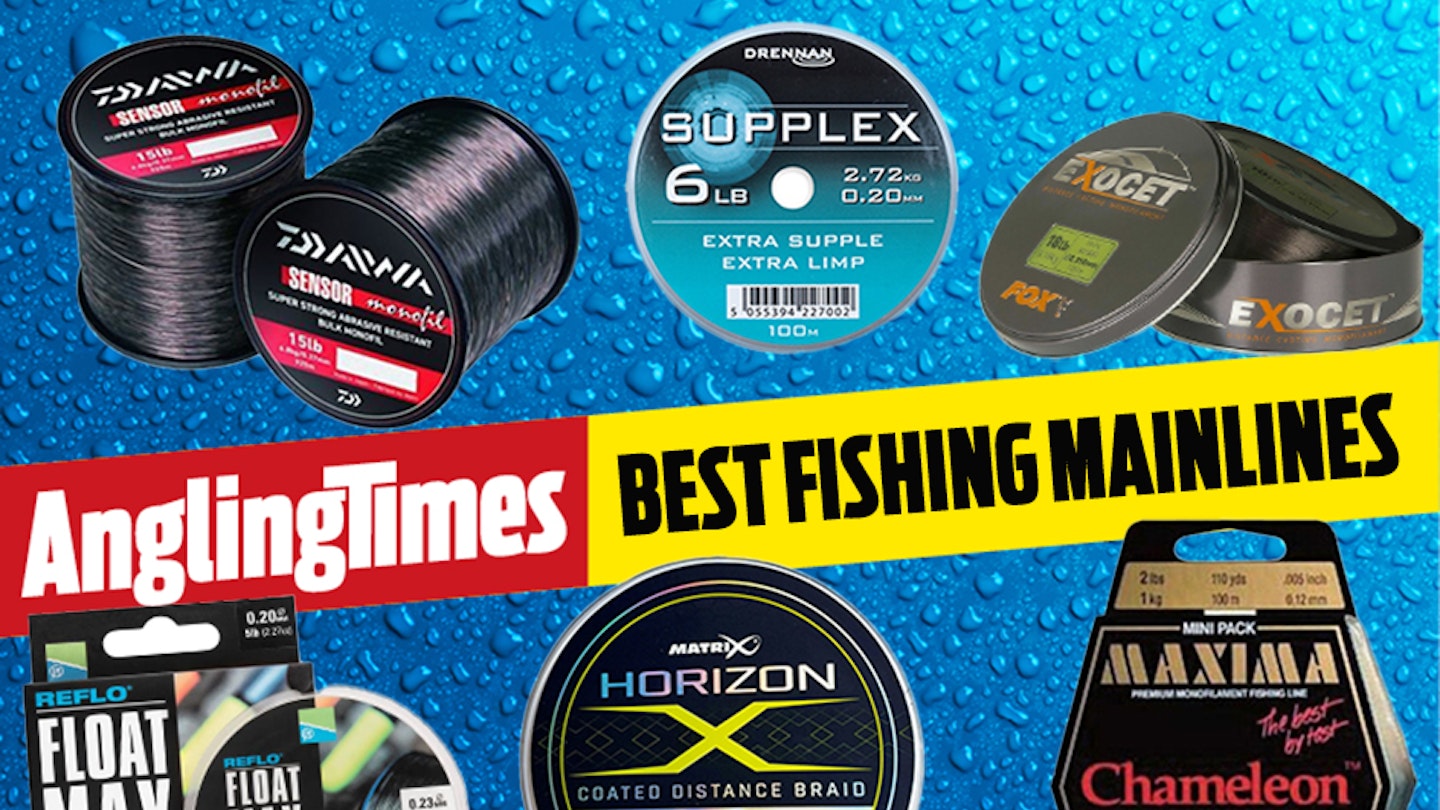The best fishing reel line, is the foundation of your fishing setup and plays a crucial role in determining your success. A tough, durable line with high knot strength is essential to withstand the rigours of fighting fish and the constant strain of heavy tackle.
When selecting a mainline, consider its toughness and durability to ensure it can withstand the abrasive forces of casting, retrieving, and playing fish, especially when targeting large or aggressive species. Additionally, a high knot strength is crucial to prevent line breakage under heavy loads, allowing you to land more fish.
The diameter of your mainline also plays a significant role. A lower diameter line can be beneficial for float fishing, as it reduces friction through the rod eyes and allows for lighter floats, improving your presentation. However, for feeder fishing, a thicker, more durable line is often necessary to handle the weight of the feeder and the abrasion of the bottom.
The best fishing reel line for your specific fishing situation depends on factors such as the target species, fishing conditions, and your personal preferences. By carefully considering these factors and selecting a high-quality line, you can significantly increase your chances of landing more fish and enjoying a successful fishing experience.
The best fishing reel lines at a glance
• Best Commercial Fishing Line: Daiwa Tournament ST - View offer on Total Fishing Tackle
• Best Distance Casting Line: Fox Exocet Pro - View Offer on Total Fishing Tackle
• Best All-Round Float fishing Line: Drennan Supplex - View offer on Fishing Tackle and Bait
• Best Fishing Line For Durability: Gardner Insight GR60x - View offer on Total Fishing Tackle
Fishing snaggier, weedier lakes for big carp will require a higher diameter/breaking strain mainline, something of around 0.35mm-0.40mm (18lb+). Whilst this will reduce the distance you can fish due to thickness of the line, it would be unsafe to fish anything lighter and risk losing hooked fish because of breakages. Should you be an angler that likes to fish at long range, a lower diameter, low stretch line would be a greater advantage, as it will allow you to load the rod and feel the lead down to the bottom with more feedback on the rod tip. Lets take a look at some of the best lines on the market for all disciplines...
WANT A REEL LINE FOR FEEDER FISHING? SEE OUR GUIDE TO THE BEST FEEDER FISHING LINE
Best commercial fishing line
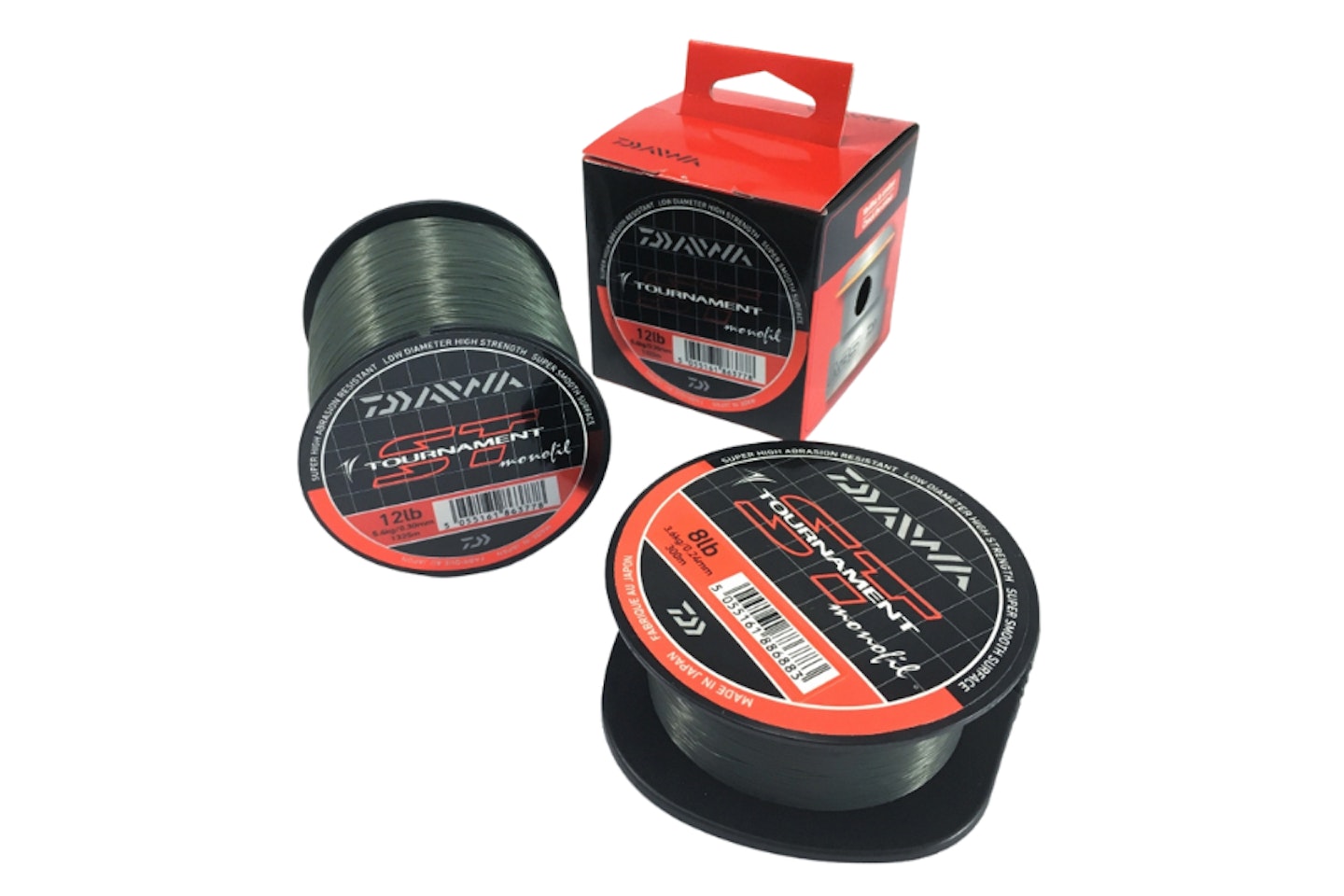
www.fishingtackleandbait.co.uk
The Daiwa Tournament ST has been long regarded as one of the best monofilament lines on the market. It has a reputation for strength and durability amongst some of the countries best anglers.
Supplied in 300m or in bulk spool options, Tournament ST offers excellent, abrasion resistance whilst maintaining high strength and minimal memory. The low memory means that the line is less prone to coiling and therefore offers excellent castability and reduction in tangles.
It's also regarded as a good shockleader material in the stronger breaking strains 10lb +
Pros
- Incredibly strong
- Low memory, abrasion resistant
Cons
- Not the lowest diameter
2.
Daiwa Sensor
Best fishing line for durability

www.fishingtackleandbait.co.uk
Daiwa Sensor is a line that’s delivered durability and superb knotting strength for many years. With a medium amount of stretch, and cheap as chips to buy, it makes a great go anywhere line!
Widely available, and made in a huge number of diameters, and comes on spool sizes from 300m right through to as much as 3,000m in 4lb bulk spools. The amount of line in bulk reduces the thicker the line is. Affordable yet great performing, we can forgive its thick and wire-like nature in bigger diameters. Available in brown and clear.
Pros
- Great all-round mainline.
- Strong and durable.
Cons
- Can be a bit trickier to use in really high diameters.
Best all-round feeder fishing line

www.fishingtackleandbait.co.uk
A high-stretch and super-tough quick-sinking line that has built up a huge fan base among anglers fishing the waggler on both natural and commercial waters. Maxima Chameleon is available on cheap 100m spools right through to bulk 600m spools that will fill several reels, and in an incredible range of breaking strains too.
A really easy-to-sink line with many uses, although a little too stretchy for some anglers’ liking but it does have its advantages with reducing fish "bumping off', its also great as a shockleader when feeder fishing with braid.
Pros
- Great at sinking.
- Very durable.
Cons
- Can be too stretchy for some.
Best braided fishing mainline
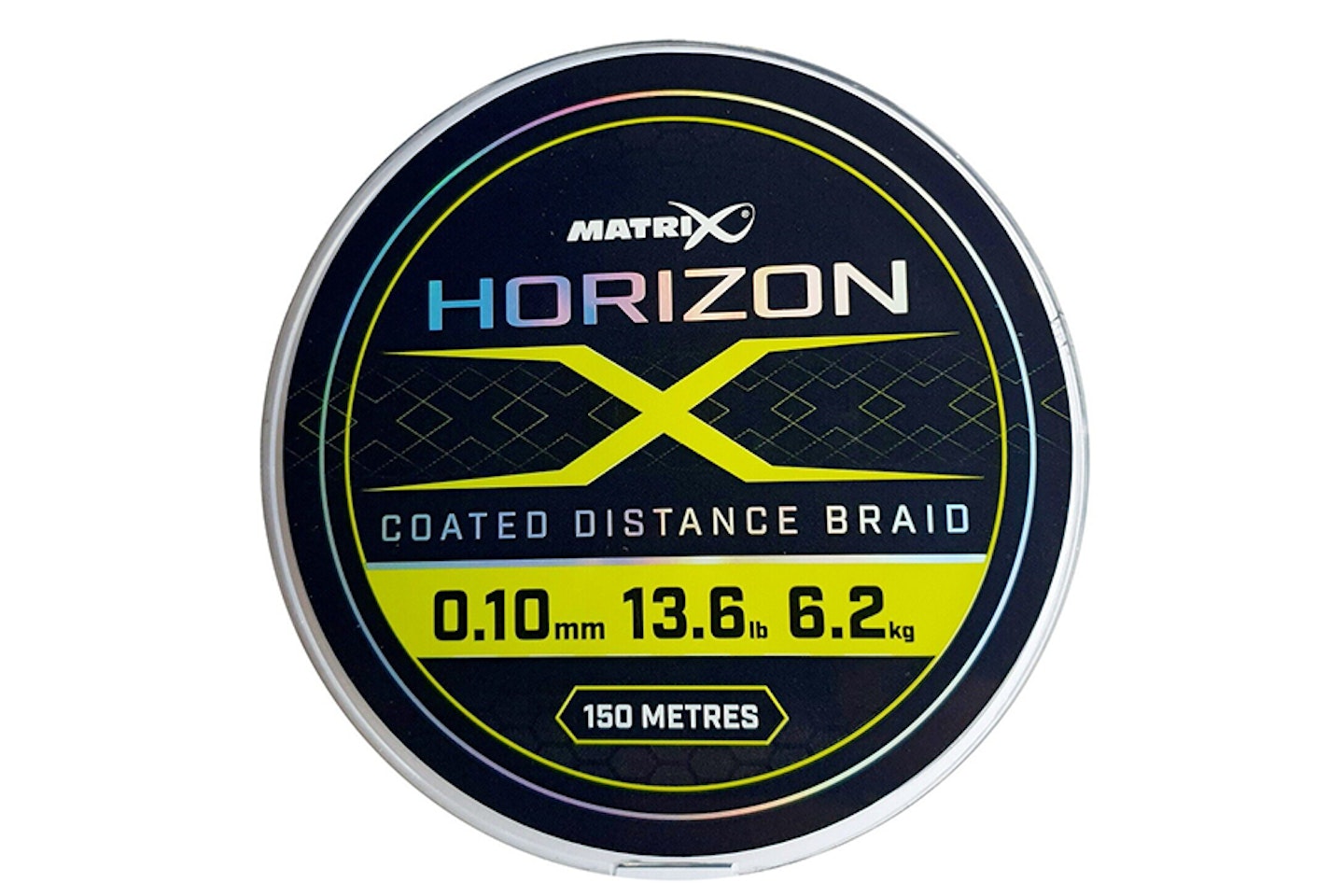
www.fishingtackleandbait.co.uk
The coating on the Matrix Horizon X Coated Distance Braid makes this line smooth and slightly stiff to help prevent wind knots. Three sizes are available on 150m spools.
Its tangle-free nature and smooth feel make this a superb long-range reel line, bite detection is incredible thanks to the zero stretch properties so even the shiest of bites will be seen. It sinks very well for a braided line too, a great option if your fishing for silverfish with a feeder.
Pros
- Zero Stretch.
- Coating prevents tangles.
Cons
- Not as versatile as a mono.
Best mainline for river float fishing
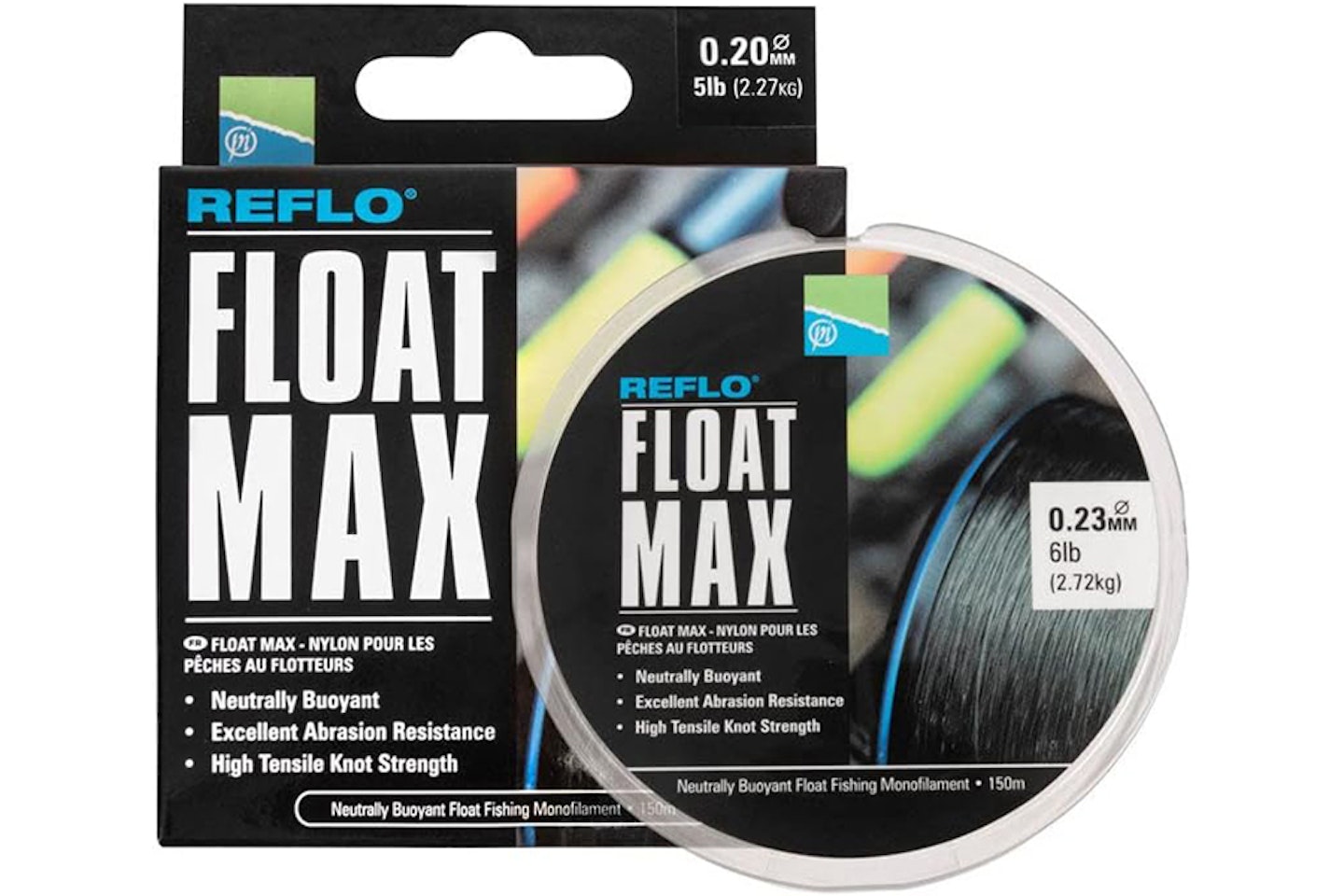
www.total-fishing-tackle.com
Preston Float Max is a low diameter line with a high knot strength that’s available from 3lb to 10lb on 150m spools.
A great choice for stick float or Bolo tactics, and can also be used for conventional or pellet wagglers. It can ride a little high in the water though, which is ideal for flat days or when recasting frequently.
Pros
- Great for float fishing.
- Smooth finish and low diameter aids casting.
Cons
- Not as durable as some lines.
Best all-round float fishing line
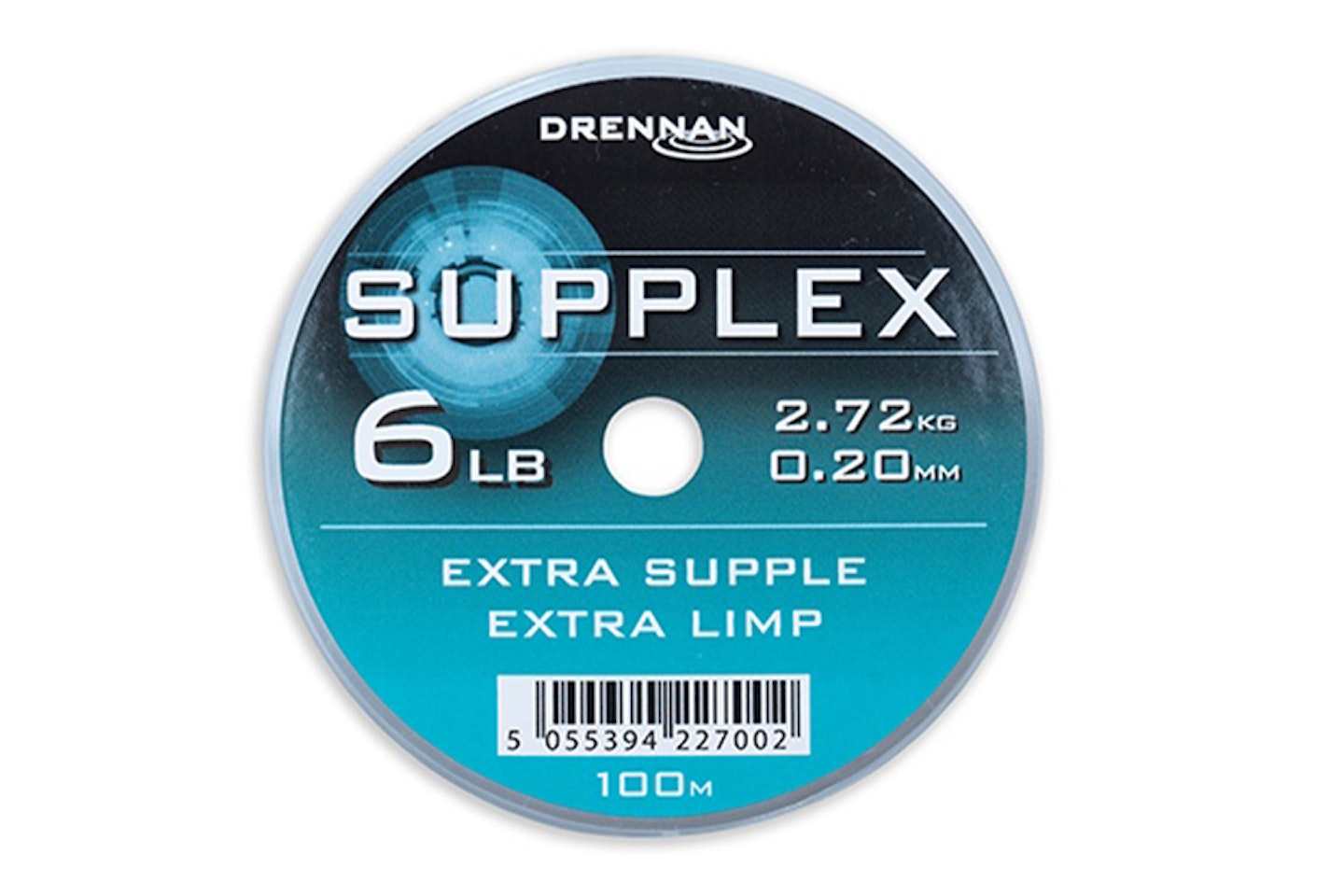
www.ebay.co.uk
One of the best float lines available on the market, Drennan Supplex is very low diameter for its breaking strain with a very clear and smooth finish to the line. Available in 50m and 100m spools from 3lb to 12lb it will cover any float fishing scenario.
One of its key attributes is how supple the line is, making casting effortless and due to its floating nature makes it ideal for using on rivers too. The line is also very abrasion resistant, with exceptional knot strength allowing you to use a lighter line than normal which can get you those extra bites.
Pros
- Very supple.
- Strong for its low diameter.
Cons
- The supple nature does mean its affected by wind easily.
Best for fishing line strength
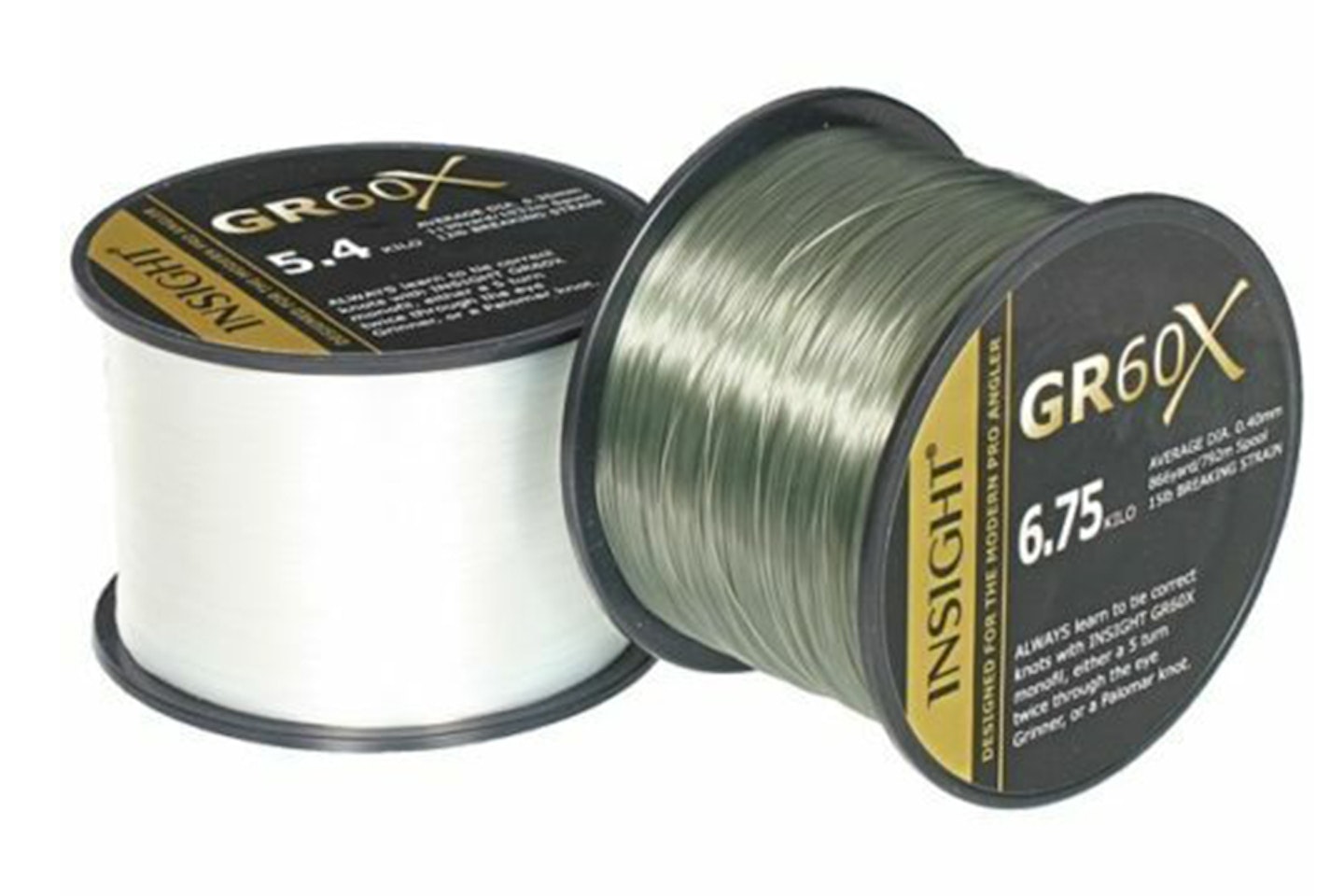
www.total-fishing-tackle.com
The premium Gardner Insight GR6X line lends itself well to demanding fishing situations, such is its mega abrasion resistance, yet it casts and sinks really well too thanks to its uniform diameter and spooling. Available in clear or green, and in 10lb, 12lb and 15lb breaking strains.
It’s bullet-proof nature and ease-of-use make it a great choice for the carp fishing fraternity and big-fish specialist anglers, giving you the confidence when you're attached to that dream fish, it won't let you down.
Pros
- Very strong.
- Super abrasion resistant.
Cons
- Not the best for long casting.
Best mainline for underwater concealment
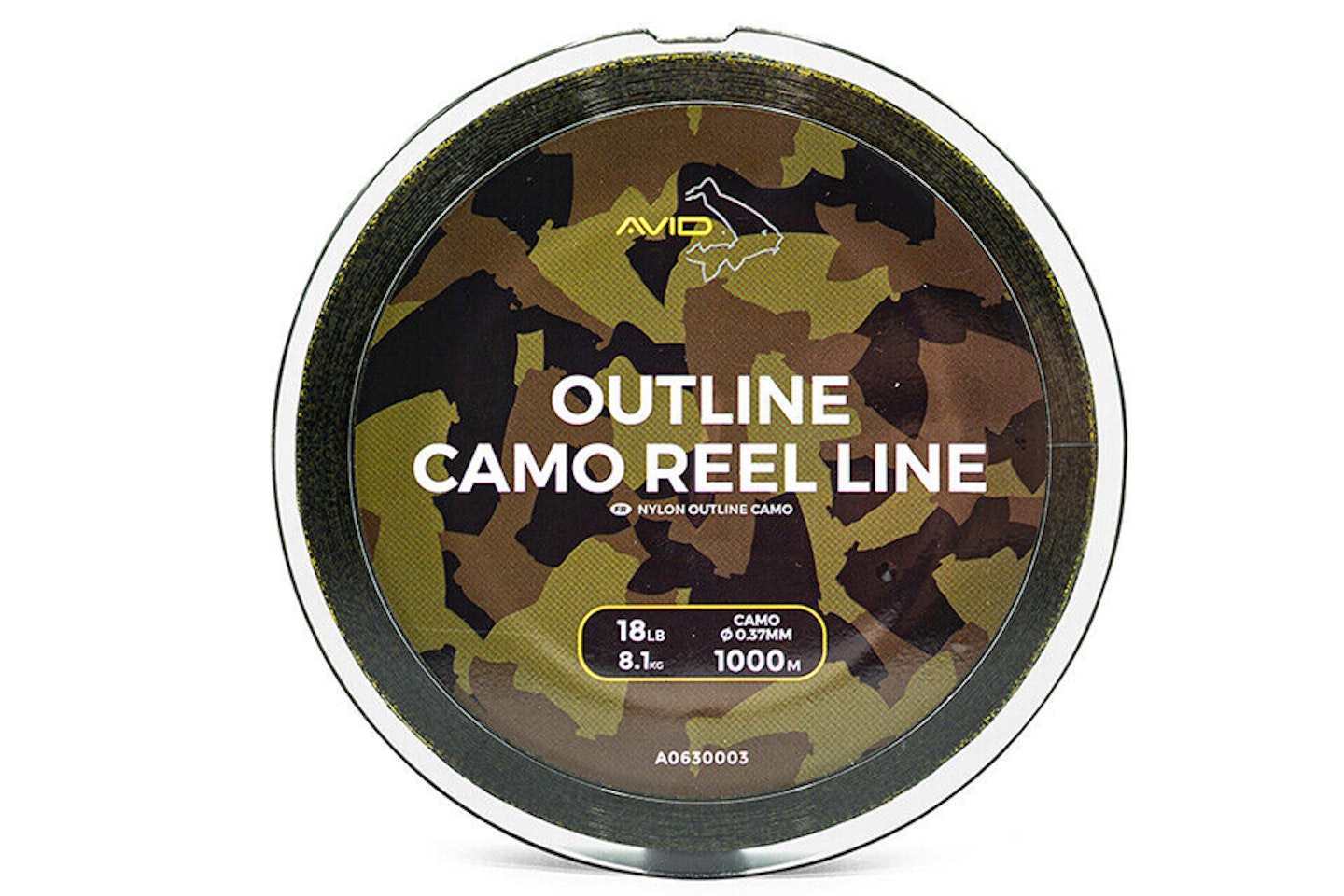
www.ebay.co.uk
The low visibility green colour interspersed with darker micro- flecks of the Avid Outline Camo help break up this line’s profile underwater. Very tough and abrasion resistant too, so a good choice for fishing weedy or snaggy venues.
A tad springy in its heavier grades/diameters, so don’t overfill your spool. Other than that, the more you use it and the more it gets stretched out, the more manageable it becomes.
Pros
- Camo finish.
- Fantastic strength.
Cons
- Can be a bit springy to start with.
Best beginner carp fishing line
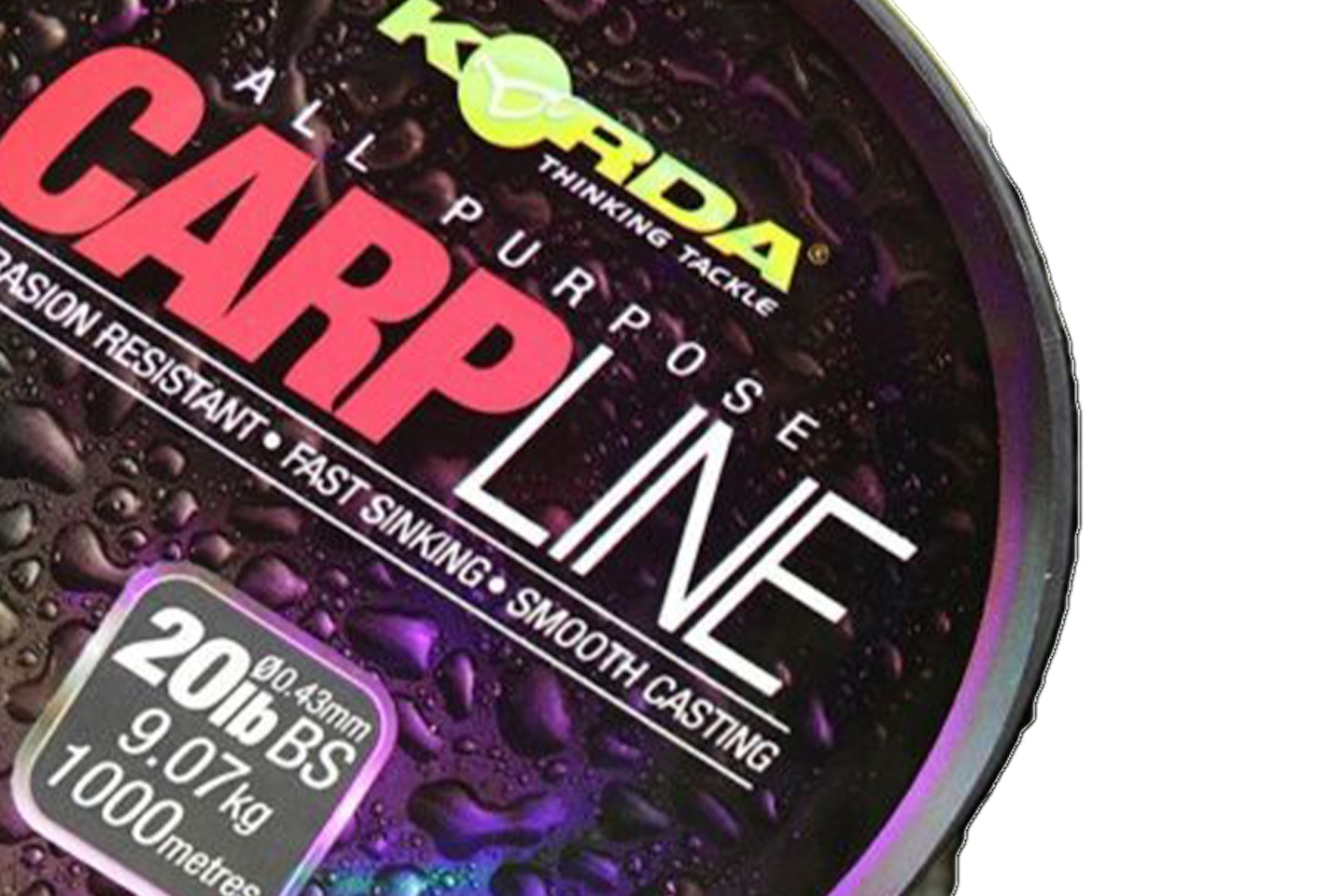
www.total-fishing-tackle.com
As ‘tough as old boots’ and sinks reasonably well, the Korda Carp Line blends in with most lakebeds thanks to its green colour. In breaking strains from 8lb to 20lb, it makes for a great beginner line or for fishing upto snags or in weedy situations due to its abrasion resistant qualities.
Seems to get better the more it’s fished with. Possible line management issues with heavier/thicker diameters.
Pros
- Very durable.
- Great value bulk spools.
Cons
- Not as user friendly as some lines to begin with.
10.
Fox Exocet Pro
Best mainline for distance casting
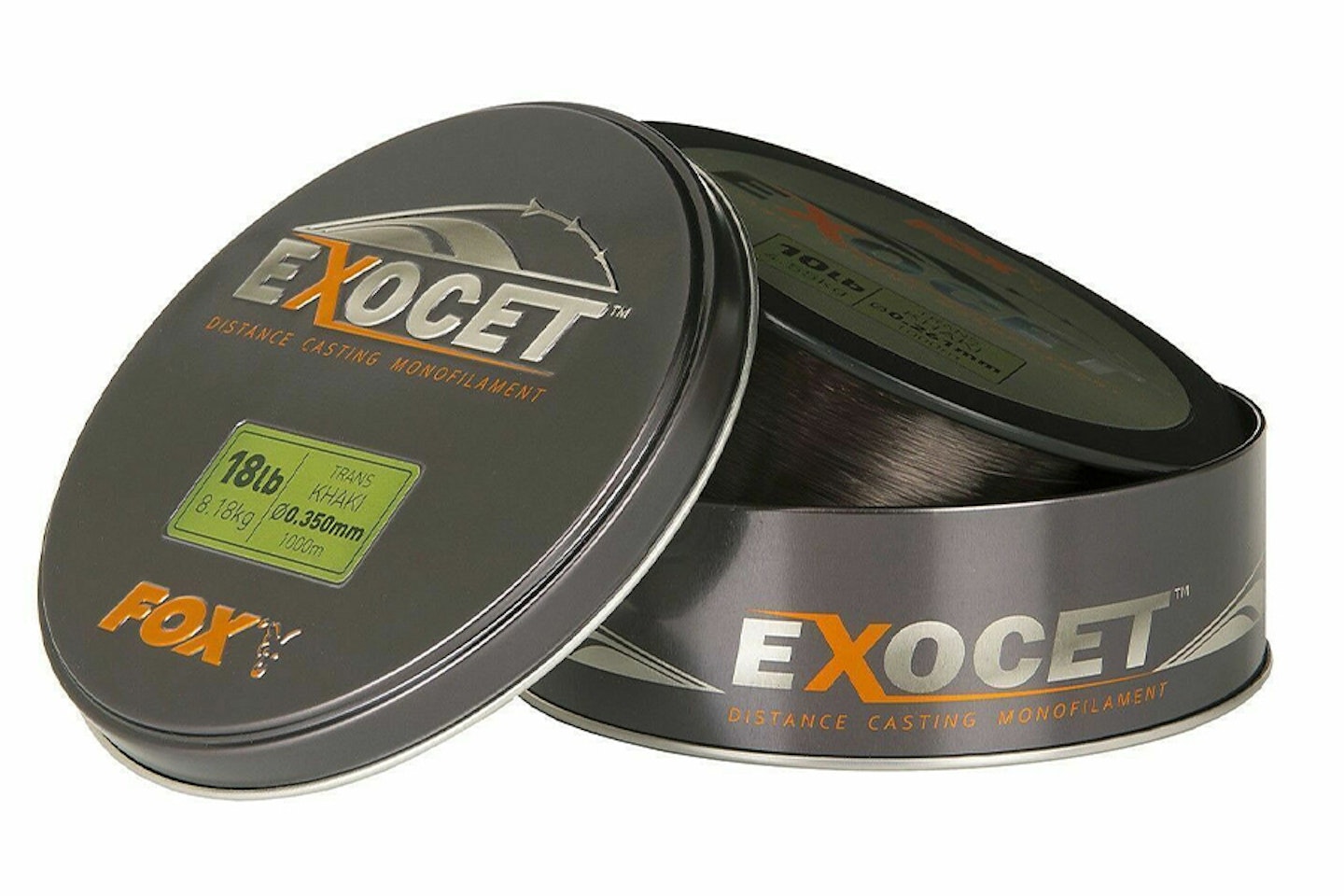
www.ebay.co.uk
Fox Exocet Pro mainline has been designed to be used for distance casting. A very soft and supple line with a low diameter profile keeps friction to a minimum when its flowing through the eyes of the rod, it is a great choice for anglers looking for a mono to cast to the horizon with. Available in breaking strains from 10lb up to 20lb.
A Lo-viz green colour was proven by underwater filming to be the best colour Fox could use to make it as invisible as possible. The line is very durable too, which is important if you have a lot of line to potentially get damaged when fishing at range.
Pros
- Great for distance casting.
- Lo-viz colour blends in great with most lakes.
Cons
- Only available in 1000m spools.
11.
Suffix Advance
Best low diameter to breaking strain reel line

www.ebay.co.uk
Suffix advance is a high-performance fishing line designed for anglers seeking the ultimate balance of strength and diameter. Its innovative construction features HMPE (High Modulus Poly-Ethane) molecules that create a durable, abrasion-resistant surface while maintaining exceptional suppleness.
This combination allows for precise presentations, low friction casting, excellent bite detection. With its low stretch, memory-free properties, and long casting ability, this reel line is offers ultimate versatility, with the low diameters ideal for all types of float, feeder and lure fishing whilst the larger diameters can stand up to the duress of coastal and wreck fishing.
Pros
- Low diameter compared to breaking strain
- High abrasion resistance
Cons
- Comparatively expensive to others
What to look for in a fishing reel line
Reel lines come in all sorts of colours, diameters and breaking strains, some are great for all round usage, whilst others are far more specialised. If you just want a line for float fishing, aim for a supple line that has a low diameter, as this will really aid your casting. If you like to do some feeder fishing and some float fishing, then a good all-round line would be great as it will allow you to fish both well, without compromising too much on the performance. Carp fishing has a lot of variation, with some lakes demanding long casts, while others are more intimate and full of snags. Generally, you'll be fishing one or the other, if a lake is very weedy, it will not benefit you chucking a lead 150-yards, as getting the fish in will be nearly impossible, so opting for a very durable thick line would be far more responsible.
Glossary
Diameter: The distance across a circle, which equates to how thick a line is. The higher the diameter the thicker the line will be.
Breaking strain: The amount of pressure that must be applied to an unknotted line before the line breaks. Therefore it doesn't mean you can only catch fish up to 10lb on 10lb line.
Abrasion resistance: The ability of a surface to resist being worn away by rubbing or friction, the better the resistance, the more it will resist being worn away.
High stretch: The amount a line will stretch varies amongst monofilaments, a higher stretch line will just simply stretch further at a given length then a low stretch.
Supple: How easily something bends and moves, the more supple the more freely an object will move.
Spool: A cylindrical device upon which the line is wound.
High knot strength: The ability to maintain strength as close to the original breaking strain after knotting the line.
Monofilament line: Monofilament fishing line (shortened to just mono) is fishing line made from a single fiber of plastic material.
Braided line: Braids are made by braiding or weaving fibers of a man-made material into a strand of line. The strand number will indicate how many fibres are woven together.
Shockleader: A length of heavier breaking strain line that is attached to your main fishing line so that it does not break during the cast.
<strong>Frequently asked questions on fishing reel lines</strong>
What diameter line is best for float fishing?
There is no one size fits all with float fishing and line diameters, as they are all good if used correctly. If you're fishing for chub on a river, something of around 0.15-0.17 (4-5lb) would be perfect, whereas if you're fishing a Pellet Waggler for carp, you would definitely want to increase that to around 0.20 (6-8lb) and above due to the power of carp. It is about finding a nice balance between strength and finesse, if the line is too heavy it will impact casting and presentation, if it is too light you'll have breakages.
Is it better to use braid or mono for feeder fishing?
If you're fishing for smaller silverfish and bream at any sort of range past 20m a braid will definitely benefit you, as it will show bites and indications up far more clearly than a mono will. If you are fishing for carp on a commercial, or silverfish for that matter, a mono mainline would be the better choice. Mono has more stretch in it to be able to cushion the harder fighting fish like carp and bigger bream in commercials, without that you would suffer a lot of hook pulls.
Will diameter impact the distance I can cast?
The higher the diameter, the thicker the line, the more friction it will produce through the rod rings when it is cast. If you are looking for extreme distances, using a lighter line with a shock leader will help. We would advise though, if the fish are simply too far, do not use a line that will not be up to landing the fish.
Does line colour matter?
This is a debate that will never end in fishing, simply because we just can't ask the fish what they can and cannot see. While clearer lines would be the obvious choice for us, they may be more detectable underwater. Quite simply, the manufacturers make line in colours they sell, that must mean they are popular and people have confidence in them. Try not to worry too much about the colour, especially if the line will be on or near the bottom out of sight anyway.
Author Dan Webb first became involved in angling journalism in 2015 and has worked as Tackle Tester at Angling Times since April 2021. He is a fanatical all-round match angler and former England Youth International.
